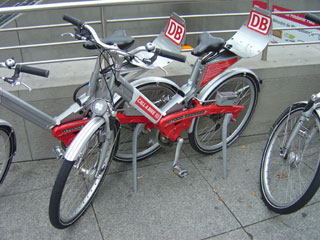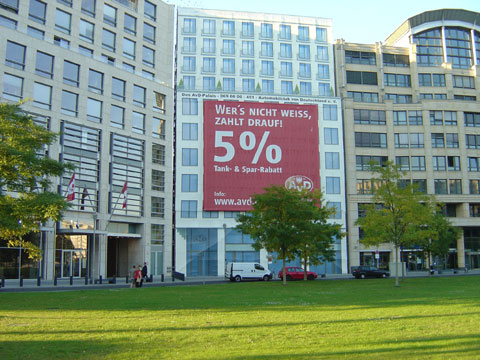Leadership and the Numbers
After a session of entering receipts and generating invoices in QuickBooks, I will always run financial reports to see how Dunkirk Systems is doing. These reports not only tell me what my revenues are, but the price of doing business in the cost of goods sold and expenses incurred along the way. Though I am very close to every financial decision made, it is good to see it all together in a big-picture format.
Like any good small businessperson, I am never satisfied with the numbers. But what can I do about it? Are my products and services being offered at a fair price that the market can bear? Can I charge more? Should I charge more? And why are my costs what they are? Could I get a better price on services? And who would be offering those services? Then there is the all important question – where am I paying more for a particular service or for a service overall that I do not need, both in its cost and in the people involved in delivering it?
The answers to these questions and others pertaining to pricing and costs do not necessarily come with quick answers, and require thoughtful analysis and sometimes hard decision-making. But I did not start a small business to make things easy, did I? This part of leading a small business is one many people do not realize is required as they venture into it. It is also one they do not like to perform and may struggle with. But as the leader of a small business it is one they must do and do thoroughly. Focusing on solely revenues and not expenses or vice versa can have a negative effect on the vitality of the small business.
Now, if you substitute “small business” for any other entity type, does the above still make sense? What if I swapped in “corporation” or “non-profit organization” or even “government agency” would what I said still apply?
My goal with The Hot Iron is to write about issues impacting small business and technology and in the past have opted against delving into politics. However I do not live in a bubble, rather in the City of Chicago in Cook County in the state of Illinois in the US. Proposed tax increases by the city, county and state could increase varying taxes and fees to some of the highest levels in the US. Where the intent is to fund services, it could make existence in this great city unbearable.
So I ask the leaders of where I live – please swap your title and governing body in the above text and provide detailed answers to the questions. This leadership is the minimum requirement you need to provide to your constituents, many of whom are very accustomed to doing this for themselves.
Business • (3) Comments • PermalinkBlog Action Day – The Good and Bad of Shopping Bags
 Today, October 15, 2007 is Blog Action Day. The idea is that on one day, bloggers around the world write a post on a common topic – the environment. As this is a broad topic, I decided to write something in line with the capitalist theme of The Hot Iron. I will recount 2 stories of extremes in retail shopping bags and packaging.
Today, October 15, 2007 is Blog Action Day. The idea is that on one day, bloggers around the world write a post on a common topic – the environment. As this is a broad topic, I decided to write something in line with the capitalist theme of The Hot Iron. I will recount 2 stories of extremes in retail shopping bags and packaging.
The Good
On a trip to Amsterdam, my lovely wife and I stayed with our friend, and after a day of sightseeing we decided to pick up some snacks for when our friend got home. We stopped at a Dirk van den Broek, a Dutch chain of grocery stores. After selecting an assortment of meats, cheeses and breads, we proceeded through the checkout. Noticing no clerks were bagging groceries, my wife went ahead to bag them as I paid. One problem – no bags! It was not that they were out of bags, they simply did not have them at all.
A quick glance around the store saw everyone else but us with their own bag or basket, collecting their purchases and heading for the exit. We did not have far to go, so we pulled our shirts up, filled them with our purchases and headed for our friend’s home. When she arrived, we told her our story to her amusement. She told us everyone usually carries a bad or basket when grocery shopping, especially at Dirk's.
The Bad
 Earlier this summer my wife came home and couldn’t wait to show me the new pair of flip-flops she got at J. Crew. As she unwrapped and pulled them out of the bag to show me, she met my look of shock and awe. Where she initially thought I disapproved of her purchase, my issue was not with what she bought, it was how the store clerk packaged it for her almost one mile trip home.
Earlier this summer my wife came home and couldn’t wait to show me the new pair of flip-flops she got at J. Crew. As she unwrapped and pulled them out of the bag to show me, she met my look of shock and awe. Where she initially thought I disapproved of her purchase, my issue was not with what she bought, it was how the store clerk packaged it for her almost one mile trip home.
The accompanying picture shows the amount of packaging J. Crew felt was necessary for a US$10 pair of flip-flops. The footwear was wrapped in several layers of white tissue paper, sealed with a J. Crew label. This was placed in a boutique-style shopping bag with a rope handle. The purchase receipt was folded and inserted in a heavy paper envelope, probably in the unlikely event the name of the store was not recognized on the receipt itself. All of this preparation was done before my wife could have asked them not to do so.
Conclusion
Many times we as individuals find it hard to see how we can make a difference on large issues such as the environment. Making incremental, economic steps is one way to make a personal difference and influence those around us.
Business • Diversions • (1) Comments • PermalinkFull-Size Building Scaffold Promotion in Berlin
Bike Rental in Germany
 Chicagoans were excited to hear that on a recent visit to France its mayor Richard Daley was going to check out bicycle rental, namely the Velib service for on-demand bike rental. This system relies on renting bikes from and returning them to a “service point.” On a recent visit to Germany, I saw examples of bike rental where the bikes stand alone.
Chicagoans were excited to hear that on a recent visit to France its mayor Richard Daley was going to check out bicycle rental, namely the Velib service for on-demand bike rental. This system relies on renting bikes from and returning them to a “service point.” On a recent visit to Germany, I saw examples of bike rental where the bikes stand alone.
In Berlin it was not uncommon to see red and silver bikes with a “DB” logo, part of the Call A Bike service. The service is summarized on this English-language page on their Web site, and it is a straightforward service where you establish an account, and when you want a bike you call a phone number, enter the code on the bike, then enter an access code on the bike and you’re on your way. This picture was taken at the Potsdamer Platz train station with several bikes available. Many times I saw just one bike, all alone, waiting to be rented. The bikes have a unique design and even a carrier with a cable for carrying packages. Click on the photo for a larger view.
I also found DB bikes around Frankfurt, as well as bikes from another vendor available for rental in a similar manner. By being able to rent and leave them wherever your destination is, the service is extremely convenient. When you are done with the bike, you lock it to a sign post and call in the location and it is picked up.
By the way, DB stands for Deutsche Bahn, the German national railroad. Now that is an integrated transportation system!
Business • (2) Comments • PermalinkI’ve Added My LinkedIn Photo
 Have you updated your LinkedIn profile to include a photo? What you say, you didn’t know that you could do it? I only heard about it from a blog post last week that it was available as of last Friday – sorry I forget which one, as I was on vacation – and just remembered to do it today.
Have you updated your LinkedIn profile to include a photo? What you say, you didn’t know that you could do it? I only heard about it from a blog post last week that it was available as of last Friday – sorry I forget which one, as I was on vacation – and just remembered to do it today.
While I was at it, I also added the photo to the right sidebar of The Hot Iron. I have been meaning to add it, as many bloggers have pointed out that I haven’t had it there.
I’m surprised it took this long for LinkedIn to offer this. And in a limiting fashion that is all too familiar with the social networking site, you can only upload one photo, and it is limited to the size of a postage stamp. You must also be logged into LinkedIn to see one as well. Photos have been available out of the gate from the large networking sites like Facebook and MySpace – and don’t forget forums too! Now if LinkedIn can provide users the option to link to anyone else within the overall network so I don’t have to keep forwarding requests along… well, one can only dream.
Business • (5) Comments • Permalink


